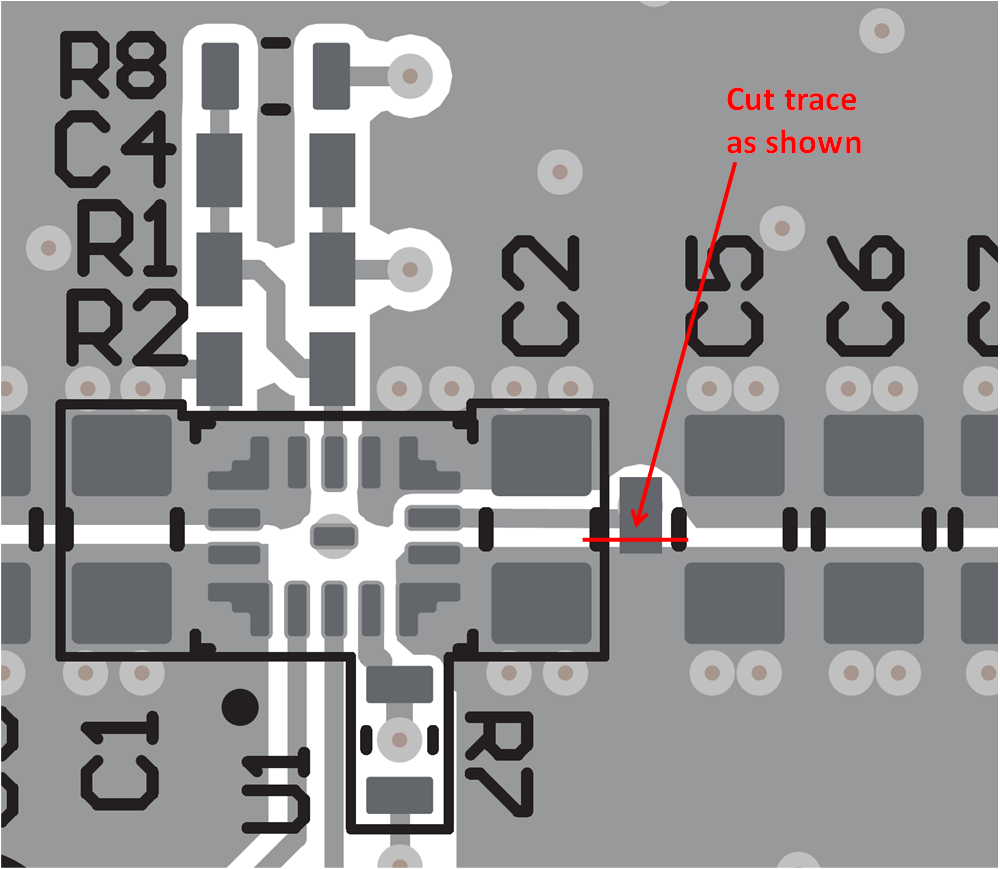SLUUD38 June 2024 TPSM82866A , TPSM82866C
4.1.5 Loop Response Measurement
The loop response can be measured with simple changes to the circuitry. First, install a 10Ω resistor across the pads of R6 on the back of the PCB. The pads are spaced to allow installation of an 0603-sized resistor. Next, cut the short section of trace on the top layer between C2 and C5 to separate the via on VOUT from the plane. Figure 5-1 shows this cut. With these changes, an AC signal (10mV, peak-to-peak amplitude recommended) can be injected into the control loop across the added 10Ω resistor. Figure 5-4 shows the results of this test.
 Figure 4-1 Loop Response Measurement Modification
Figure 4-1 Loop Response Measurement Modification